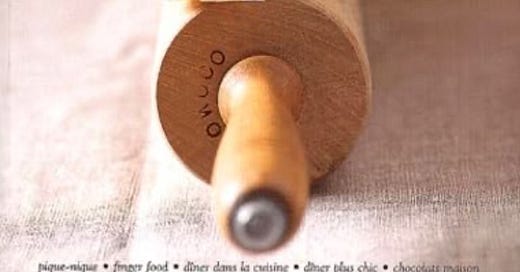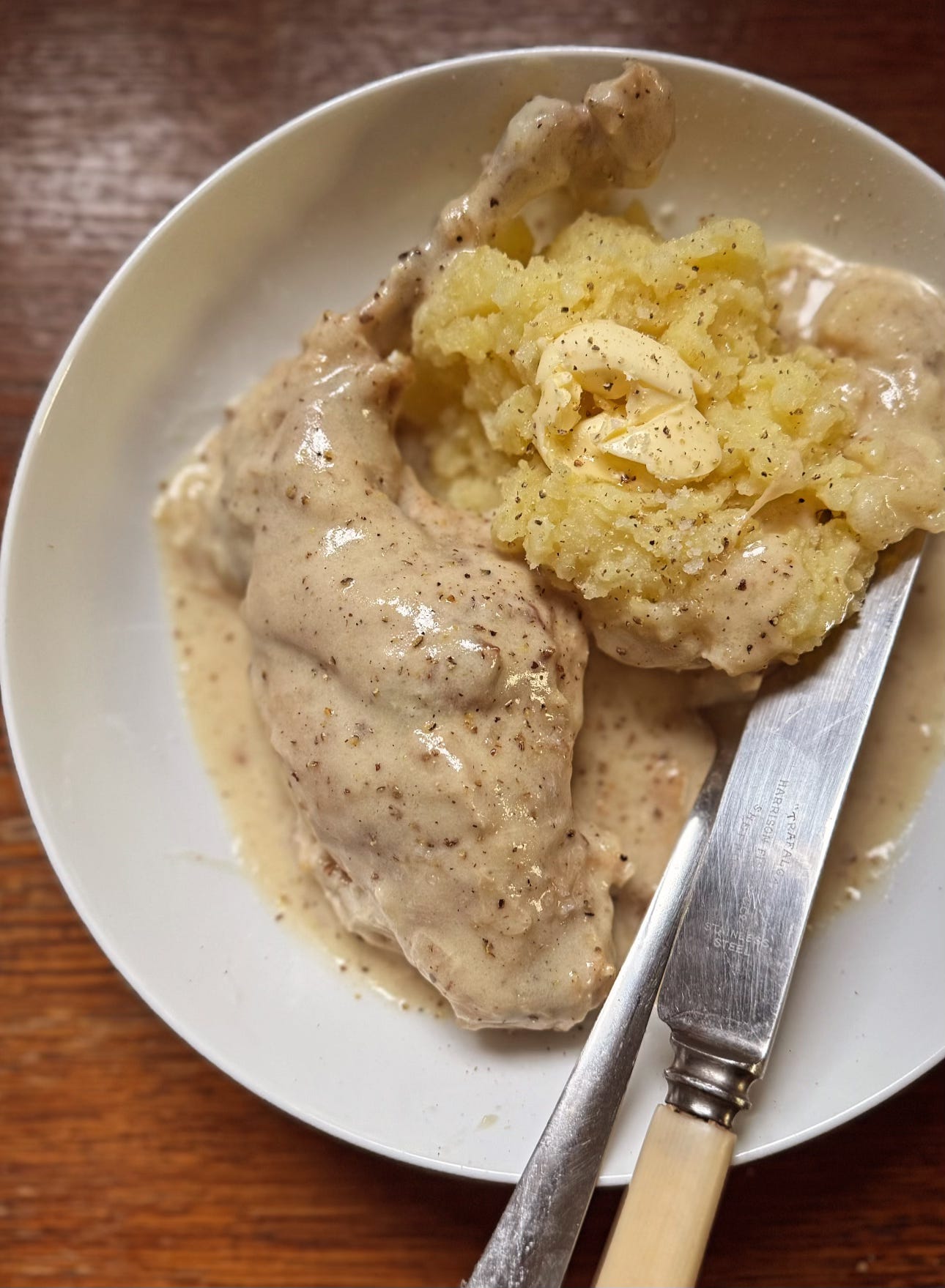It has been quite an emotional week in my little cookbook world. The response to the announcement of the 25thanniversary edition of Petits Plats Entre Amis and my Instagram call for insights from its original readers has been overwhelming. I think that travelling back to those days around the turn of the century, when everything felt so much simpler, safer, when the internet had not yet taken hold of our lives and minds, feels comforting right now, and I love that my book might serve as a sort of time machine with even some short-lived serenity as a destination.
This superbly retro (read: blisteringly unfashionable, even in France) rabbit recipe is one that’s often being flagged as a favourite in the answers to the short questionnaire I devised for PPEA1 fans. If you are one of them, and it amuses you to join in, please let me know in the comments and I’ll send it to you.
I love the love for Pitou’s recipe. He was great fun, a true bon vivant, and it comes from even more innocent times, back in the late eighties, when I was easing into my French gourmet family life like a knife through Irish butter left out on a summer afternoon.
We were visiting my aunt and uncle-in-law in their beautiful hotel particulier in Nantes. I remember the creaking, polished parquet, the gorgeous 18th century interiors, gently dotted with contemporary art and above all, the way they so joyously and generously welcomed us into the house and into the warm kitchen for supper. My uncle-in-law was cooking, as he mostly did. The table was set with candles, silverware, pretty plates and glasses, and, partly in honour of my first visit, Pitou (a diminutive of Philippe) was making us his famous rabbit with gorgonzola. I remember it still, served so daintily in a small silver platter with ears, like this one.
It's a dish, fittingly, in the tradition of one of Nantes’ most famous recipes, le beurre blanc Nantais. Created in 1890 by a woman cook , Clémence Lefeuvre, in St Julien de Concelles, a small town just outside the city, it is yet another Tarte Tatin in its conception, arising from, apparently, a messed-up béarnaise. This would be why it’s still known as “beurre râté” or “failed butter sauce” around St Julien, though how any sauce involving butter can ever be a complete failure is beyond me. Even brown butter and black butter have their niches.
The principle of the beurre blanc sauce is to use the low temperature and acidity of wine to dissolve the flavour released and condensed while sautéing (without browning or very slightly) shallots or onions, and then let it heat again to evaporate the alcohol. This is deglazing, and leaves you with an intensely flavoured, slightly syrupy, acidic base. If you have cooked fish or meat or vegetables alongside the shallots, you will also capture their intensified flavours, making sure to scrape the pan as you add the wine. It also works with water, or stock, but then you won’t benefit from the wine’s aroma or acidity. Vinegar is great if you want to avoid alcohol, but go easy, just a small glug!
Once the sauce base is up to temperature, butter and/or cream is whisked in to balance the acidity and emulsify the mixture for homogenous texture. This, for me, is where it gets interesting. The base flavours are smoothly transported throughout the sauce by the cream and butter, the acidity stops the texture from being too cloying (while hot, at least) and also heightens the perception of flavour by increasing salivation.
I blame/thank Pitou’s rabbit for reinforcing my lifelong love of creamy-winey French sauces and their dishes, although the story really started with my first Poulet à l’Estragon, where, for me, ‘Love’ and love of food were eternally combined. More on that here - it’s a paid post.
It’s the same divine formula I happily found throughout the years in dishes from Poularde à la Crème et vin jaune, to the humble Flammenkuche and Moules à la Crème. Mussels cooked in wine and shallots provide the same simple foil, while releasing their own flavour into the juices and then just beg for cream, or cream with curry, or tomatoes, or chorizo or Roquefort. Which brings me back to Pitou’s rabbit.
Adding blue cheese here is genius. It’s very much not an overpowering Roquefort but a creamier, milder gorgonzola, and you must not use too much. We want a background funk, on an even footing with the mildly meaty, creamy flavours and acidity, not a super-pungent muscling-in of blue-cheesiness.
Lapin au gorgonzola from Petits Plats entre Amis
For 4
40 minutes cooking
4 rabbit legs
30g butter
1 tbsp olive oil
2 finely chopped shallots
50cl white wine
1 bayleaf
20cl double cream
125g gorgonzola
salt, white pepper
Lightly brown the shallots and legs in the butter and oil, then pour in the wine and deglaze. Add the bayleaf, cook over low heat for about 35/40 minutes, adding water if the meat is not submerged enough, and checking/stirring from time to time.
Crumble the gorgonzola into the hot juices and let it melt while stirring/whisking. Add the cream, stir through, bring back up to temperature, season and serve with fresh tagliatelle or mashed potato.






I enjoyed your post, just found you Trish, a lovely style in your writing. Thank you
A reissue! How exciting. Now to find some rabbit legs...